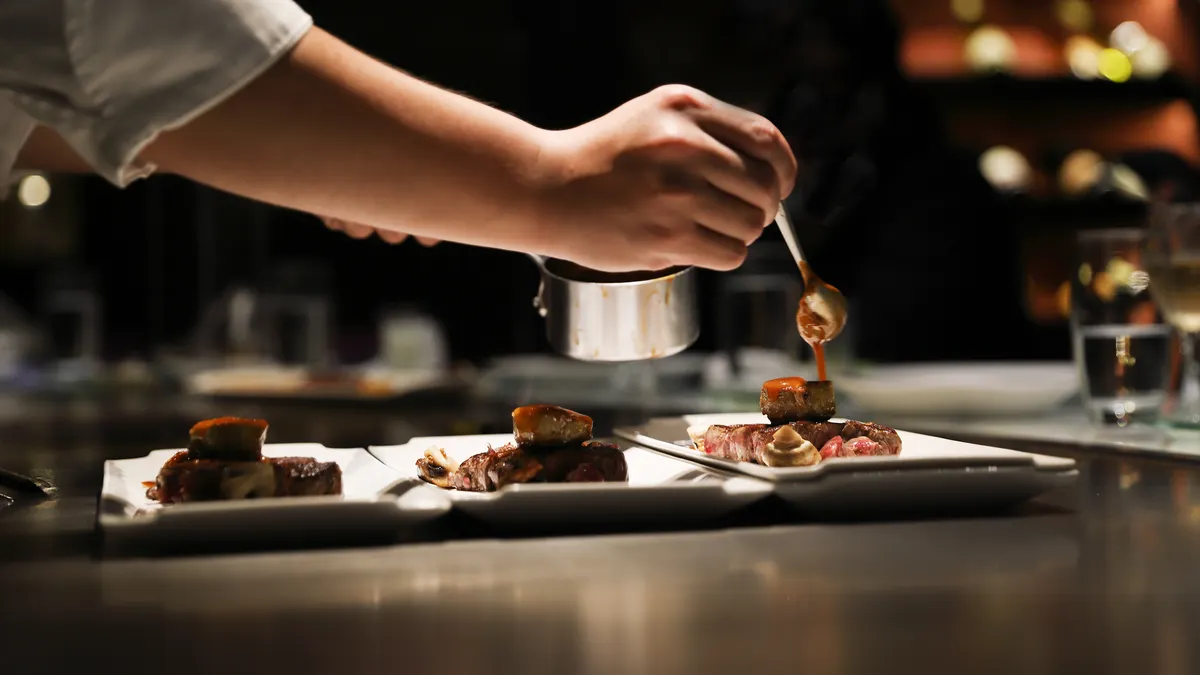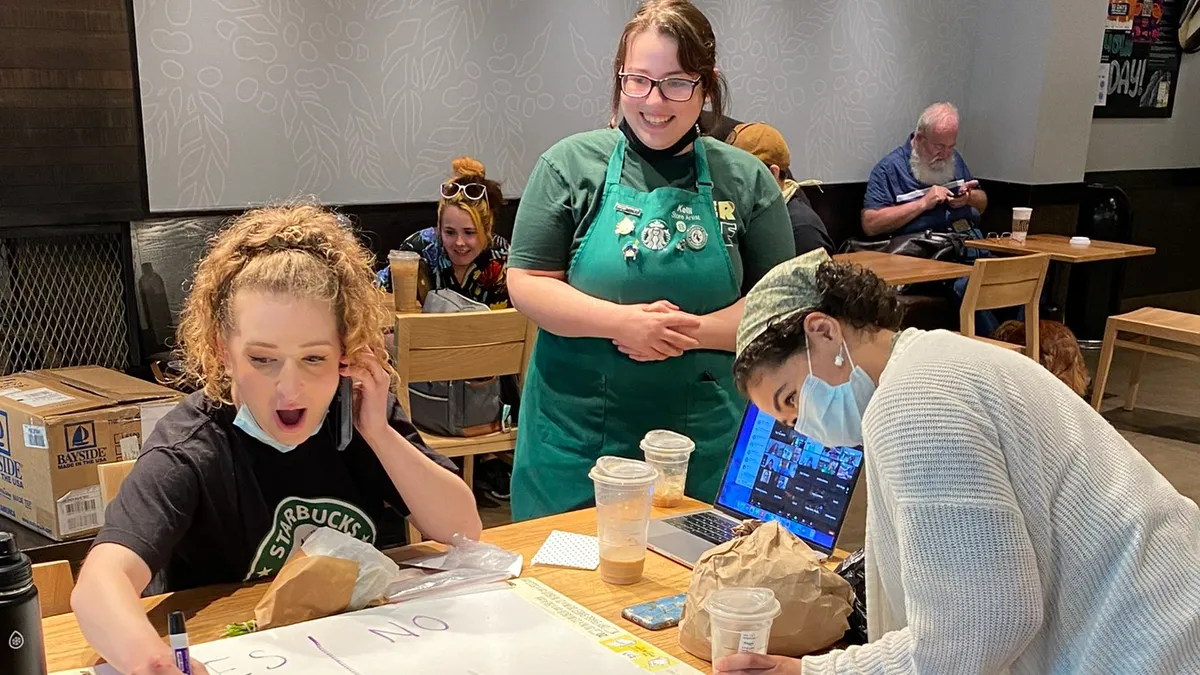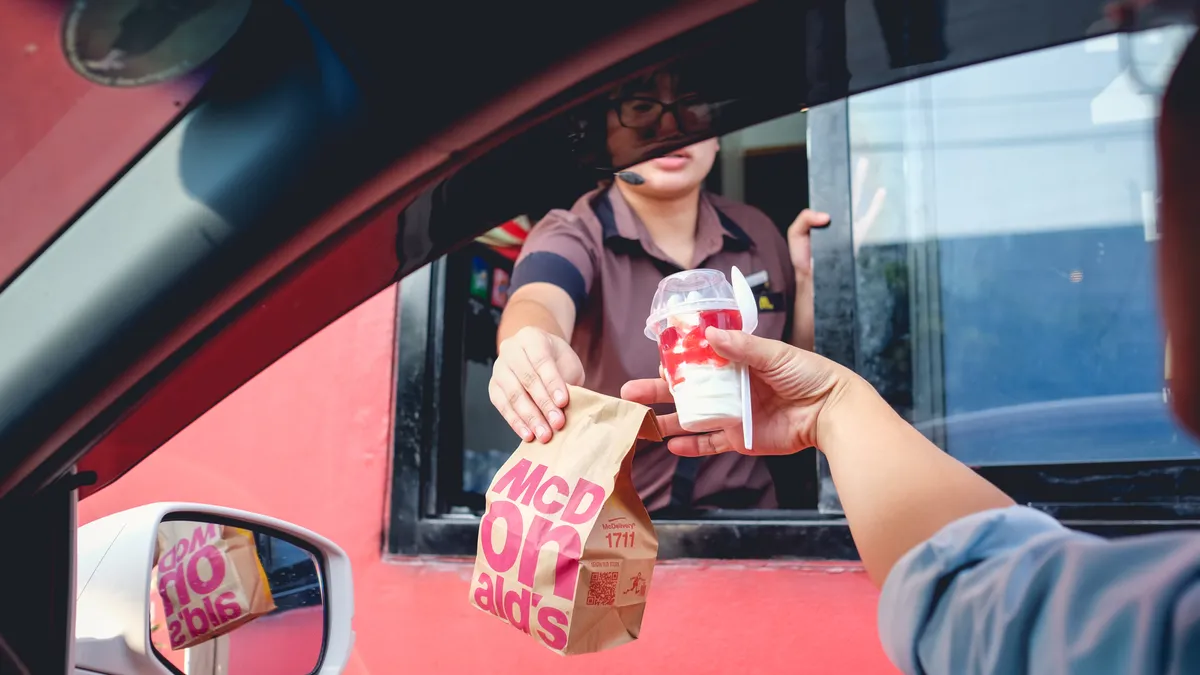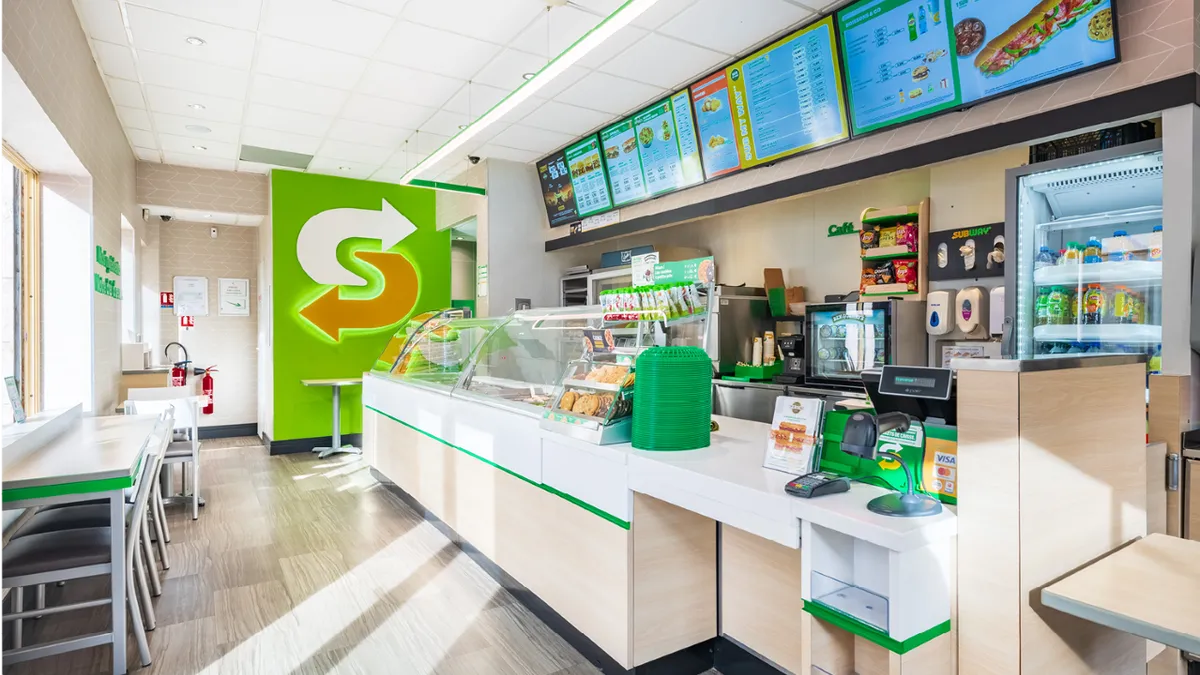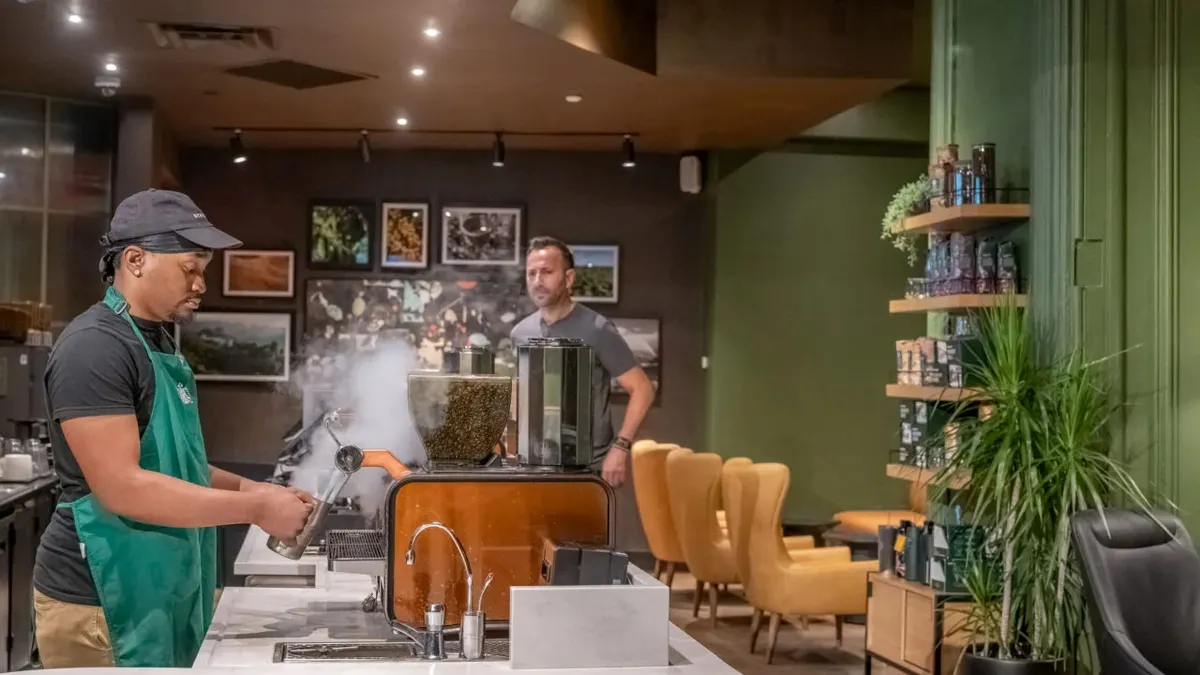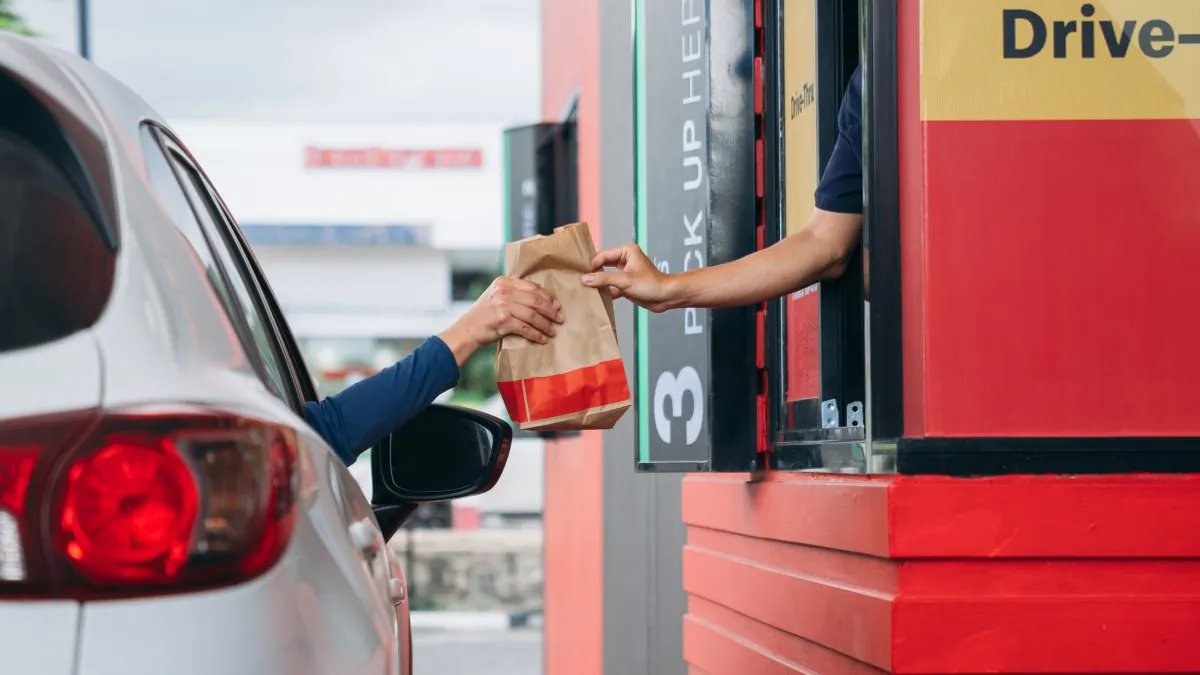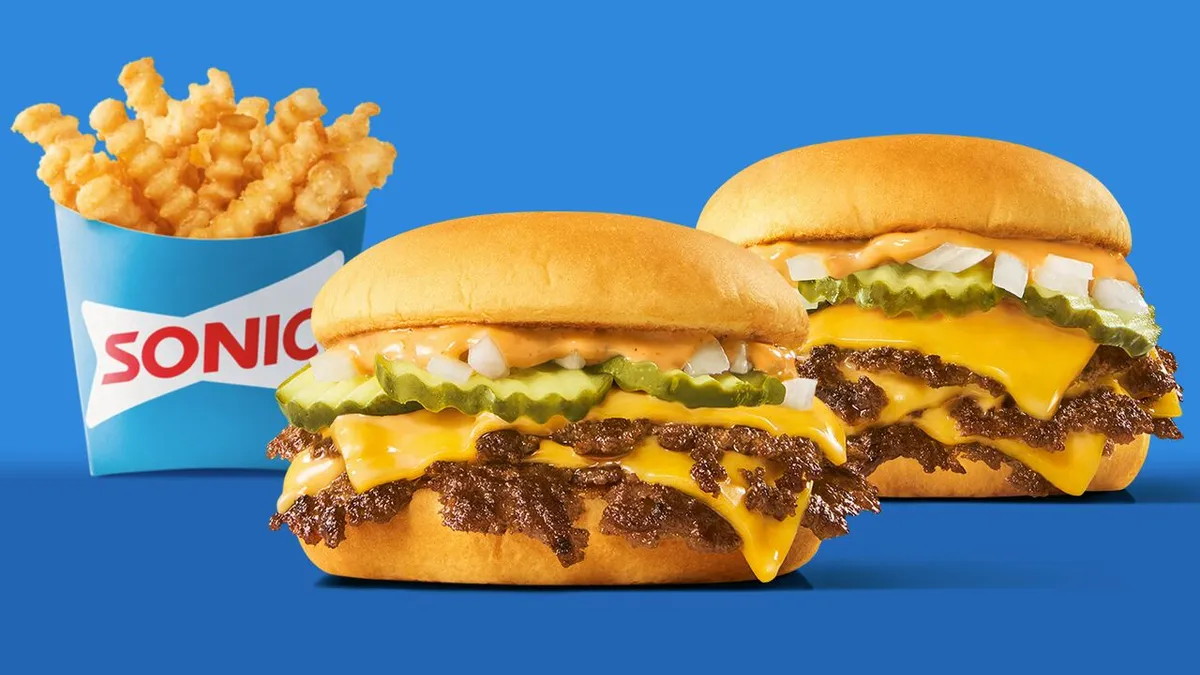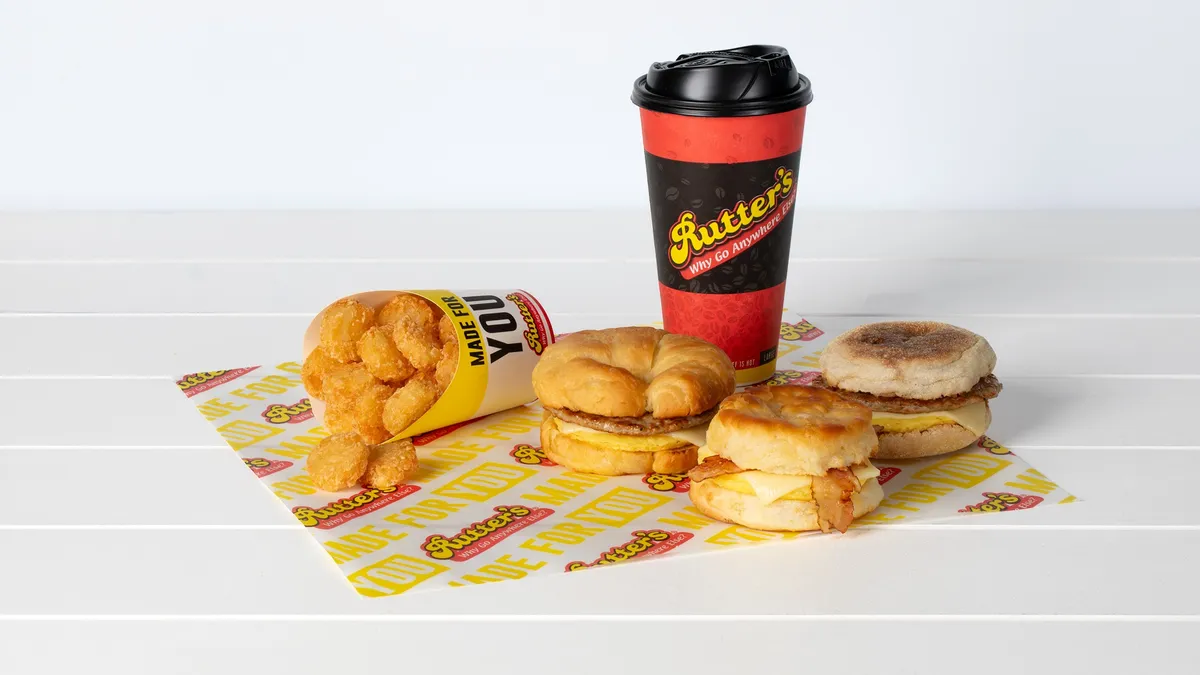Consumer pullback and macroeconomic uncertainty dominated the conversation at the National Restaurant Association Show in Chicago last week, as restaurants brace for anticipated impacts of fresh tariffs.
But so far, 2025’s challenges haven’t been universal. Operators across restaurant sectors and price points have managed to drive same-store sales growth, despite talk of price sensitivity. Perhaps no restaurant sector is seeing stranger consumer signals than full-service dining, where a shift back toward on-premise occasions and group dining may be blunting the impacts of consumer trade down and the rise of digital-first diners. At the same time, many full-service chains are closing stores and even filing for bankruptcy.
Restaurant Dive spoke with operators from different parts of the full-service industry to understand what challenges the sector is facing and how businesses, from urban fine dining concepts to national casual brands, are dealing with a turbulent and contradictory market.
Some fine dining has escaped trade down
Q1 traffic was down compared to the year-ago period at Adalina, a modern Italian restaurant in Chicago, but traffic has trended up in recent weeks, Jonathan Gillespie, a partner at the restaurant said. Gillespie said he thought Adalina has outperformed some of its close competitors in fine dining.
Gillespie attributed some of the restaurant’s resilience to its high price point, which means much of its clientele comes to Adalina for special occasions, rather than impulse dining.
“A lot of people are being more cautious with how they spend their dollar, and maybe they are going out for special occasions,” Gillespie said.
At Adalina, reservations have stayed unchanged on the weekend — Thursday to Sunday — but are down the rest of the week, Gillespie said, indicating that diners are saving up for weekend occasions. This aligns with broader observations shared by Technomic at the NRA Show, which indicated consumers across dayparts and sectors were shifting dining out to the weekend.
Gillespie said Adalina has seen other consumer behavior changes, such as a dip in how much consumers are eating. Gillespie said some of that might be attributable to GLP-1 drugs, which suppress the appetite. But when consumers do spend, he said, they opt for premium options — an on-menu reflection of the forces that have largely preserved Adalina’s traffic.
“They might eat less, but they’re eating higher quality. So they’re spending more on organic or on certain specific cuts of beef,” Gillespie said, adding that a similar dynamic is at play with alcoholic beverages. Consumption of that menu category has fallen for a long time, but consumers are prioritizing brand-name liquors.
To capitalize on these trends and preserve its premium positioning, Adalina is emphasizing service and on-premise experience, Gillespie said.
“Not only does the food need to be good, but it needs to be a full, all-encompassing experience with the amount of money people are paying,” Gillespie said. The company is also leaning into new flavors — smoky beverages, spicy foods — to keep pace with changing consumer palates.
Other casual groups are waiting for the shoe to drop
At a price point or two below Adalina, some full-service restaurants are still waiting to see the impact of consumer slowdowns, said Bruce Nelson, a fractional CFO across several restaurant groups in the Minneapolis-Saint Paul, Minnesota metro area.
“We are flat to up about a percent and a half,” Nelson said of the restaurants whose financial operations he oversees. Nelson said that without a dramatic expansion in employee benefits or input costs, he thinks the back half of 2025 might actually be “boring” for some restaurants.
While some downtown restaurants are struggling, early 2025 has been kind to suburban operations, Nelson said. But that doesn’t mean consumer behavior is static, either.
“We saw butts in chairs go up and [tickets go] about a buck to a buck and a half down, depending on location,” Nelson said. “You’re ordering the pizza or the hamburger and a tap beer instead of the steak and a craft cocktail.”
Consumers still seem to opt for on-premise, polished casual experiences as long as the price points for items remain restrained, Nelson said. This is something of a contrast to trends at Adalina, where consumers are buying premium items at the same time they’re cutting back on overall occasions.
“On the food side we’re just staying very solid,” Nelson said. “We’re not selling huge rib eyes a ton. We’re not selling big filets. But good hanger steaks, good sirloins.”
Casual dining brands look to digital engagement to bring in consumers
Applebee’s is looking to digital channels to help find its way out of a sales slump, said Vicki Hormann, the chain’s executive director of off-premise and customer relations management. Applebee’s hasn’t posted a quarter of positive comps growth since Q2 2023, despite a variety of value plays, including the Dollarita promotion.
The chain is one of many family dining and casual dining brands that are struggling with tepid sales. Denny’s and IHOP have both seen negative same-store sales growth for several consecutive quarters, and Olive Garden has posted comps growth in only two of the last five quarters.
Appleebee’s efforts to overcome consumer price fatigue relies in part on changing the way it interacts with its loyal customers. The brand is in the process of overhauling its Club Applebee’s loyalty system, Hormann said, transforming it from “a very linear email marketing program” to a modern loyalty program that offers both points-based rewards and specialized engagement.
“Earlier this year, we offered our Club Applebee’s members a ‘try it before you can buy it’ deal with our new Big Cluckin’ Chicken Sandwich,” Hormann said. Outside of strategic promotions, like its Date Night Pass and Superbowl Sweepstakes, Hormann said the brand is looking for strategic linkages between its loyalty program and other brands.
Recently, Applebee’s and Wyndham Hotels linked their loyalty programs to allow consumers to earn rewards points across the platforms and receive free delivery from Applebee’s at Wyndham locations.
At the heart of that partnership, Hormann said, was the observation that Applebee’s and Wyndham’s systems possess a significant geographical overlap.
“Seventy-seven percent of Applebee’s restaurants are within five miles of a Wyndham property,” Hormann said, adding that the brand anticipates the Wyndham tie-in will drive significant engagement among the chain’s guests.
Deals like that, or like Applebee’s 2-for-$25 meal, Hormann said, help the chain improve its value perception with guests facing macroeconomic uncertainty.



